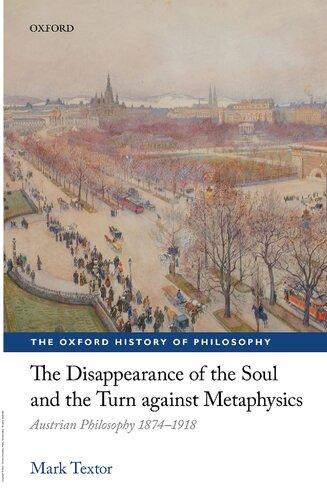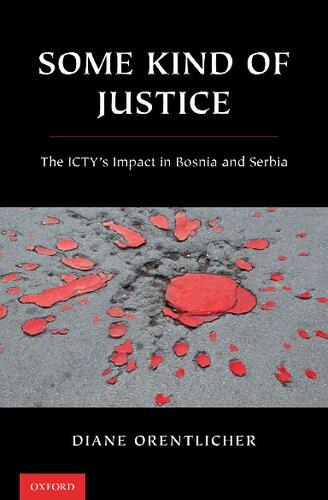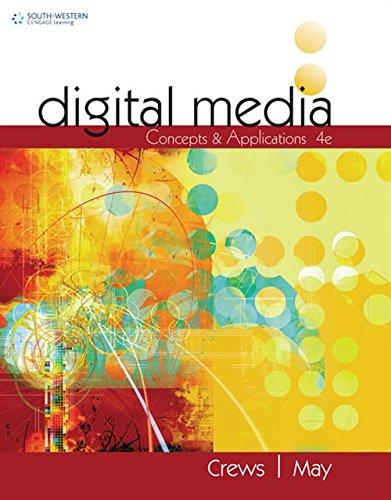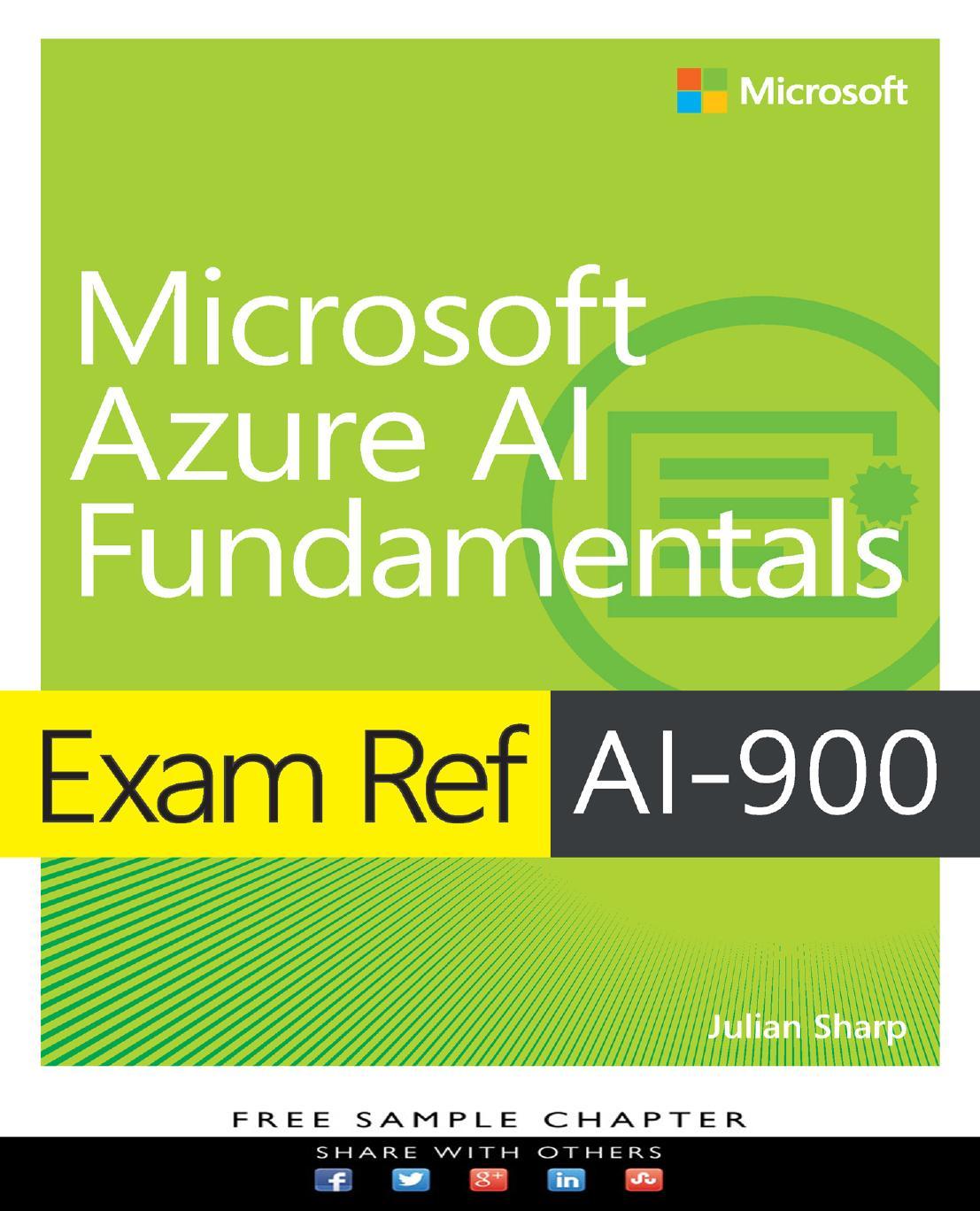The Disappearance of the Soul and the Turn against Metaphysics: Austrian Philosophy 1874-1918 (The Oxford History of Philosophy) Mark Textor
https://ebookmass.com/product/the-disappearance-of-the-soul-and-theturn-against-metaphysics-austrian-philosophy-1874-1918-the-oxfordhistory-of-philosophy-mark-textor/
ebookmass.com
Outsourcing Repression: Everyday State Power in Contemporary China Lynette H. Ong
https://ebookmass.com/product/outsourcing-repression-everyday-statepower-in-contemporary-china-lynette-h-ong-2/
ebookmass.com
Some Kind of Justice: The ICTY's Impact in Bosnia and Serbia Diane Orentlicher
https://ebookmass.com/product/some-kind-of-justice-the-ictys-impactin-bosnia-and-serbia-diane-orentlicher/
ebookmass.com
Digital Media: Concepts and Applications 4th Edition Tena B. Crews
https://ebookmass.com/product/digital-media-concepts-andapplications-4th-edition-tena-b-crews/
ebookmass.com
Deindustrialization, Distribution, and Development: Structural Change in the Global South Andy Sumner
https://ebookmass.com/product/deindustrialization-distribution-anddevelopment-structural-change-in-the-global-south-andy-sumner/
ebookmass.com





Exam Ref AI-900 Microsoft Azure AI Fundamentals Julian Sharp
https://ebookmass.com/product/exam-ref-ai-900-microsoft-azure-aifundamentals-julian-sharp/
ebookmass.com


4.3



Mens Rea of Accomplice Liability 88
Purpose and Knowledge 89
Application Case 4.2: State v. Gladstone 90
Agents Provocateur and Entrapment 90
Application Case 4.3: Wilson v. People 91
Application Case 4.4: United States v. Twigg 92
4.4 Extent of Accomplice Liability 94

Application Case 4.5: People v. Luparello 94
Natural and Foreseeable Consequences 94
Negligent Acts 95

Application Case 4.6: Riley v. State 96
4.5 Relationship between the Principal Actor and the Accomplice 97
Innocent Agent or Instrumentality 97



Application Case 4.7: United States v. Walser 99
Feigning Primary Party 99
Application Case 4.8: Vaden v. State 100
When the Principal Actor Is Acquitted 101
Application Case 4.9: People v. Eberhardt 103
4.6 Issues in Accomplice Liability 104
Limitations of and Defenses to Complicity: Abandonment 104
Accomplice Liability versus Conspiracy: The Pinkerton Doctrine 105

Application Case 4.10: Pinkerton v. United States 106
How Far Should Accomplice Liability Reach? 106
REVIEW AND APPLICATIONS 107
Summary by Chapter Objectives 107
Key Terms 109
Review Questions 109
Problem-Solving Exercises 109
Workplace Applications 110
Ethics Exercises 111
Notes 111
CHAPTER 5 Incomplete Crimes 113
5.1 Attempted Crimes 114
The Six Stages of Committing a Crime 115
Historical Development 115
Mens Rea of Attempt 116
Mens Rea and the MPC 117
Actus Reus of Attempt 118
7.2 Sentencing 189
Types of Sentencing 189

Application Case 7.1: Ewing v. California, Lockyer v. Andrade 191

Application Case 7.2: Blakely v. Washington, United States v. Booker 192
Alternatives to Imprisonment 193
Death Penalty 195
REVIEW AND APPLICATIONS 199
Summary by Chapter Objectives 199
Key Terms 200
Review Questions 200
Problem-Solving Exercises 200
Workplace Applications 201
Ethics Exercises 201
Notes 202
PART III Types of Crime
CHAPTER 8
Criminal Homicide 206
8.1 Homicide 207
The Beginning of Life 207

Application Case 8.1: Keeler v. Superior Court 208
The End of Life 210
The Right to Die 211
8.2 Elements of Criminal Homicide 212
Corpus Delicti Requirement 213

Application Case 8.2: People v. Kimes and Kimes 214
Actus Reus 215

Application Case 8.3: People v. Newton 215
Mens Rea 216
Causation 217

Application Case 8.4: Kibbe v. Henderson 219 Without Lawful Justification or Excuse 220
8.3 Types and Degrees of Criminal Homicide 221
8.4 Murder 222
Malice Aforethought 222
The Felony Murder Rule 223



Application Case 8.5: People v. Stamp 224
Reckless Disregard for the Value of Human Life 226
Application Case 8.6: Taylor v. Superior Court 226
The Division of Murder into Degrees 226
Application Case 8.7: People v. Anderson 227
Embezzlement 300
False Pretenses 302

Application Case 11.3: People v. Lorenzo 302
Receiving Stolen Property 302
11.2 Extortion, Blackmail, and Bribery 304
Extortion 304
Blackmail 305
Bribery 306
11.3 Forgery and Uttering 306
REVIEW AND APPLICATIONS 308
Summary by Chapter Objectives 308
Key Terms 308
Review Questions 309
Problem-Solving Exercises 309
Workplace Applications 310
Ethics Exercises 310
Notes 310
PART V Crimes against the Community and Institutions
CHAPTER 12 White-Collar Crimes 312
12.1 Understanding White-Collar Crime 313
12.2 Tax Evasion 313
Existence and Proof of a Tax Deficiency 313

Application Case 12.1: Friedberg v. United States 315
Affirmative Act 315

Application Case 12.2: Spies v. United States 315
Willfulness 316
Defenses 316
12.3 False Advertising 317
Federal Law 317

Application Case 12.3: Truck Components, Inc. v. K-H Corp. 318

Application Case 12.4: American Home Products Corporation v. Johnson & Johnson 319
State Laws 319
12.4 Mail Fraud 320
Scheme to Defraud 320

Application Case 12.5: McNally v. United States 321
Intent to Defraud 322
Use of the U.S. Postal Service or Private Interstate Carrier 322
Furtherance of the Scheme to Defraud 322
14.4 Alcohol Legislation and Offenses 392
Temperance and Prohibition 392
Changing Views on Alcohol Use and Abuse 392
Drunk Driving Offense (Driving under the Influence) 393

Application Case 14.10: Schmerber v. California 395
Intoxication and Alcoholism as Defenses 395

Application Case 14.11: Driver v. Hinnant 396

Application Case 14.12: State ex rel. Harper v. Zegeer 397
REVIEW AND APPLICATIONS 398
Summary by Chapter Objectives 398
Key Terms 399
Review Questions 399
Problem-Solving Exercises 400
Workplace Applications 400
Ethics Exercises 401
Notes 402
CHAPTER 15 Crimes against the Administration of Justice 405
15.1 Obstruction of Justice 406
15.2 Bribery 406
Common Law Bribery 406
Modern Bribery 407

Application Case 15.1: McDonell v. United States 407
Commercial Bribery 409
15.3 Perjury 410

Application Case 15.2: People v. Sharpe 412
15.4 Obstruction of Justice 412
Witness Tampering 413

Application Case 15.3: United States v. Baldyga 414
Suppressing Evidence 415
15.5 Resisting Arrest 415

Application Case 15.4: United States v. John Bad Elk 417
15.6 Compounding and Misprision of a Felony 418
15.7 Escape 419

Application Case 15.5: People v. Trujillo 420
15.8 Contempt of Court 420
REVIEW AND APPLICATIONS 422
Summary by Chapter Objectives 422
Key Terms 423
Review Questions 424
The fundamentalist approach to cataloging elements and updating where appropriate makes the coverage of the subjects complete yet user-friendly.
• Chapters 12 through 16 concisely cover the specialty areas of white-collar crimes; crimes against public order, safety, and morality; drug- and alcoholrelated crimes; crimes against the administration of justice; and organized crime, gangs, and terrorism.

Features
A number of learning tools are included to make the text easier to teach and, for students, easier to learn, enlivening the material with practical, concrete examples and applications.
• Chapter Objectives that begin each chapter challenge, encourage, and alert students to the major concepts that follow. Next is a Chapter Outline of the major chapter headings, allowing students to preview at a glance the material to be covered.
• The Summary by Chapter Objectives concluding each chapter provides general answers to questions posed by the objectives, an invaluable tool for students who need summation and reinforcement of each chapter’s main points.
• Key terms are highlighted in the margins, boldfaced in the text, listed at the end of the chapter, and defined in a comprehensive Glossary at the end of the book.
• Application Case boxes present brief descriptions of important cases pertinent to the text.
• On the Job boxes describe employment opportunities related to the subjects discussed in the chapters.
• Web Exploration boxes point to websites relevant to surrounding topics and contain questions that invite further study.
• The Critical Thinking feature—questions for students that ask them to reflect on important concepts and theories—concludes the main sections of each chapter.
• End-of-chapter Review Questions stimulate class discussion.
• Problem-Solving Exercises, Workplace Applications, and Ethics Exercises pertain to workplace issues, highlight major principles from the chapters, and enable students to begin applying what they’ve learned.
The fourth edition of Criminal Law for the Criminal Justice Professional , is now available online with Connect, McGraw-Hill Education’s integrated assignment and assessment platform. Connect also offers SmartBook for the new edition, which is the first adaptive reading experience proven to improve grades and help students study more effectively. All of the title’s website and ancillary content is also available through Connect, including:
• A full Test Bank of multiple choice questions that test students on central concepts and ideas in each chapter.
• An Instructor’s Manual for each chapter with full chapter outlines, sample test questions, and discussion topics.
• Lecture Slides for instructor use in class.
Acknowledgments
A number of people were of substantial help to me in the production of the new edition of this book. First are the research assistants from Southwestern Law School, without whom I could not have completed this work. They include Nicole N. Morris and Ava Shahani of the class of 2017. I would like to thank the dean, faculty, and board of trustees of Southwestern Law School. This book was originally written with the aid of a sabbatical research grant from the law school, and the current edition was written with the aid of my research assistants who were paid through the school’s work-study program. Finally, I would like to thank the reviewers: Charlene Bates Freyberg, Bellevue Community College; Charles Crawford, Western Michigan University; Anthony Schembri, University of Florida; Michelle Watkins, Abilene Christian University; Elvira White, University of Maryland University College; Jeffrey Zack, Fayetteville Technical Community College; and Fei Luo, Sam Houston State University; Paul E. Meyer, Kent State University; Cyntoria Johnson, Esq., Georgia State University.
This page intentionally left blank

CHAPTER OBJECTIVES
After reading and studying this chapter, you should be able to:
1. State a basic definition of law.
2. Explain what distinguishes the criminal law from other law.
3. Define the common law.
4. State the principle of legality.
5. Explain what the MPC is.
6. Describe the fundamental structure of the American criminal justice system.
7. Name the four basic police functions.
8. State what is required for a law enforcement officer to arrest a suspect.
9. State the purpose of a preliminary hearing.
10. Describe the two alternative methods for charging serious crimes.
11. List the three possible bases for a defendant’s pretrial motion to dismiss.
12. State the four possible grounds for appeal of a criminal conviction.
13. State when a defendant is entitled to an attorney at trial.
